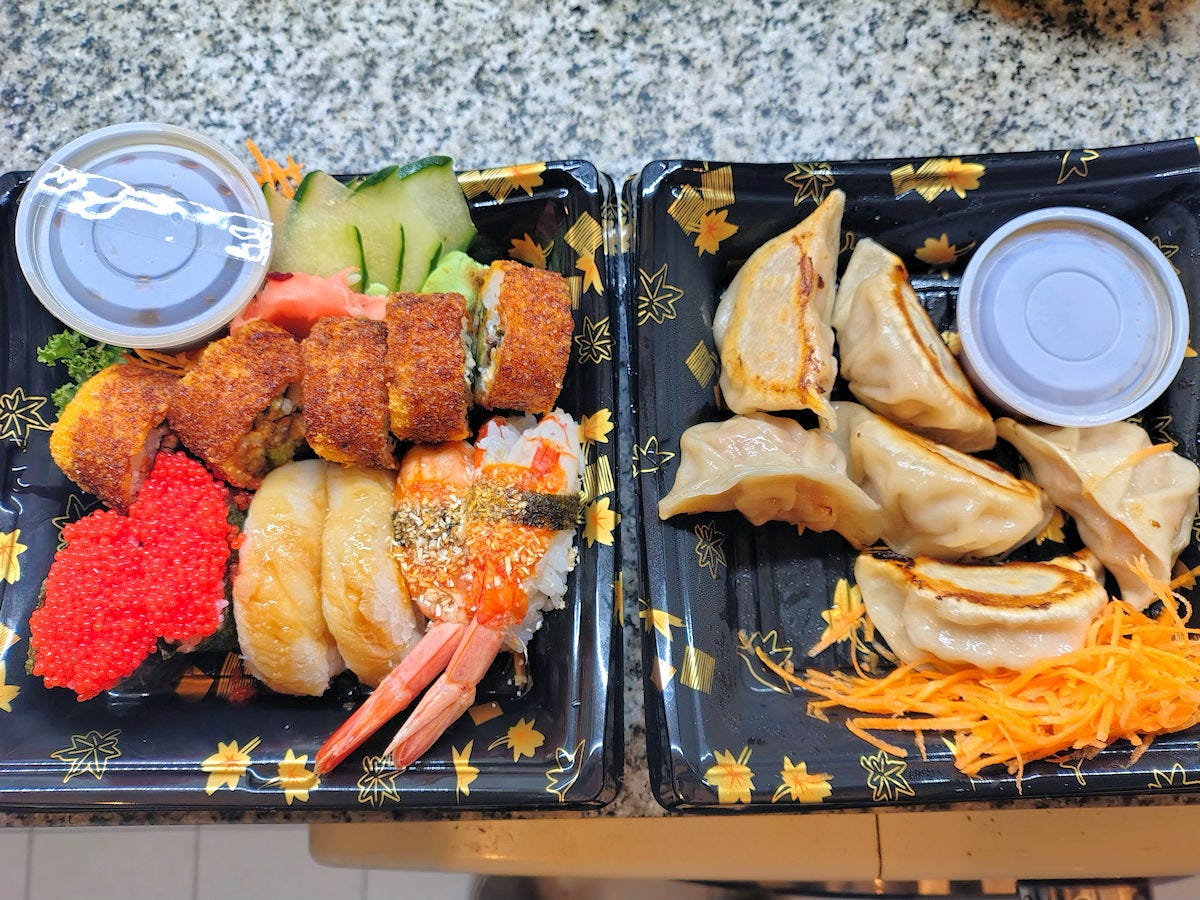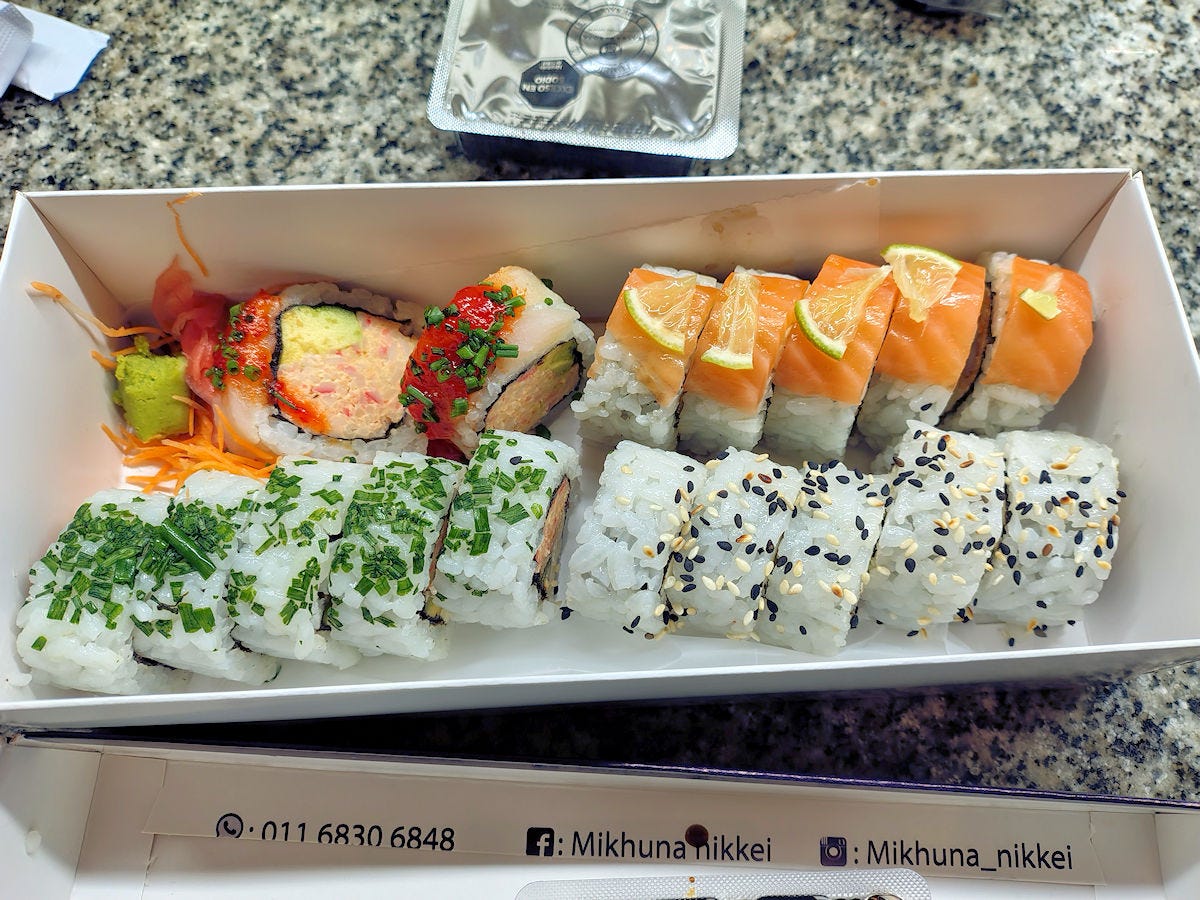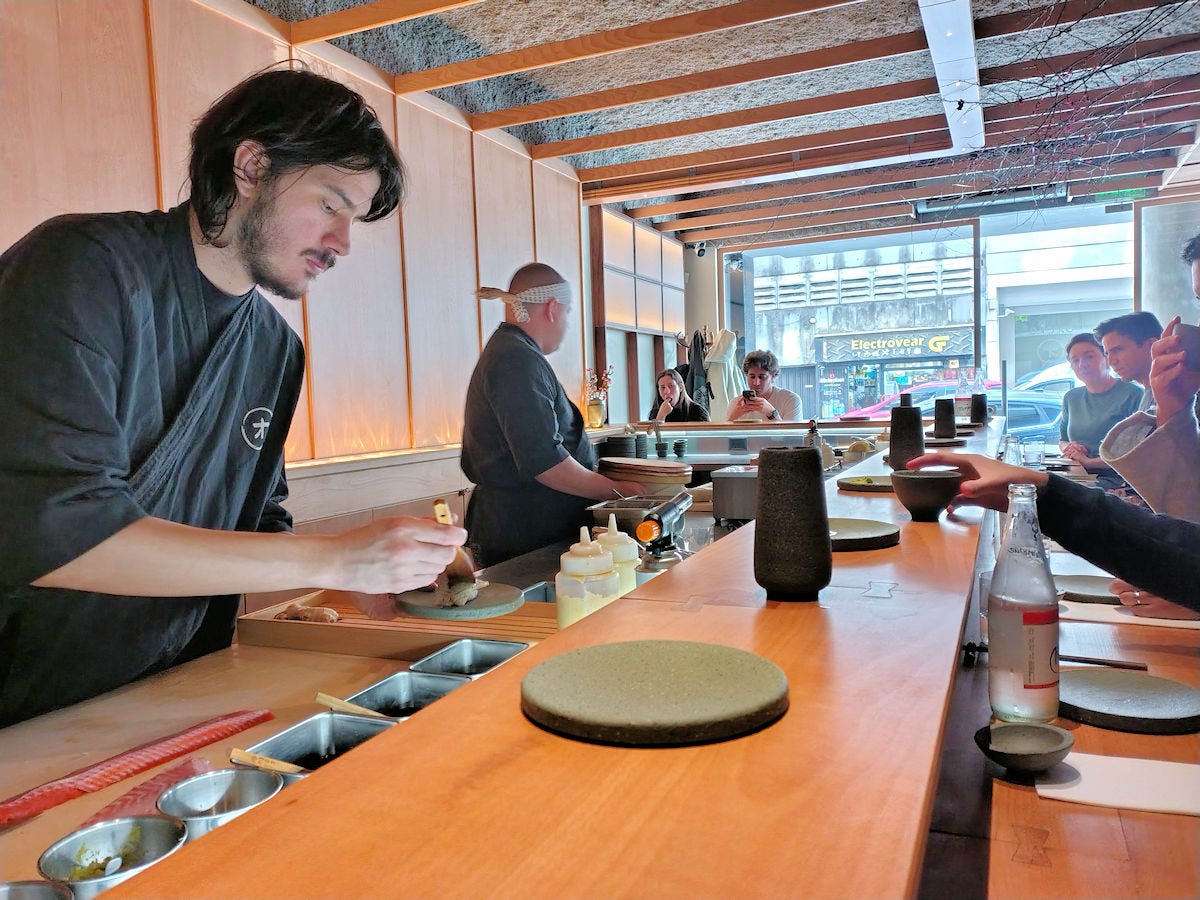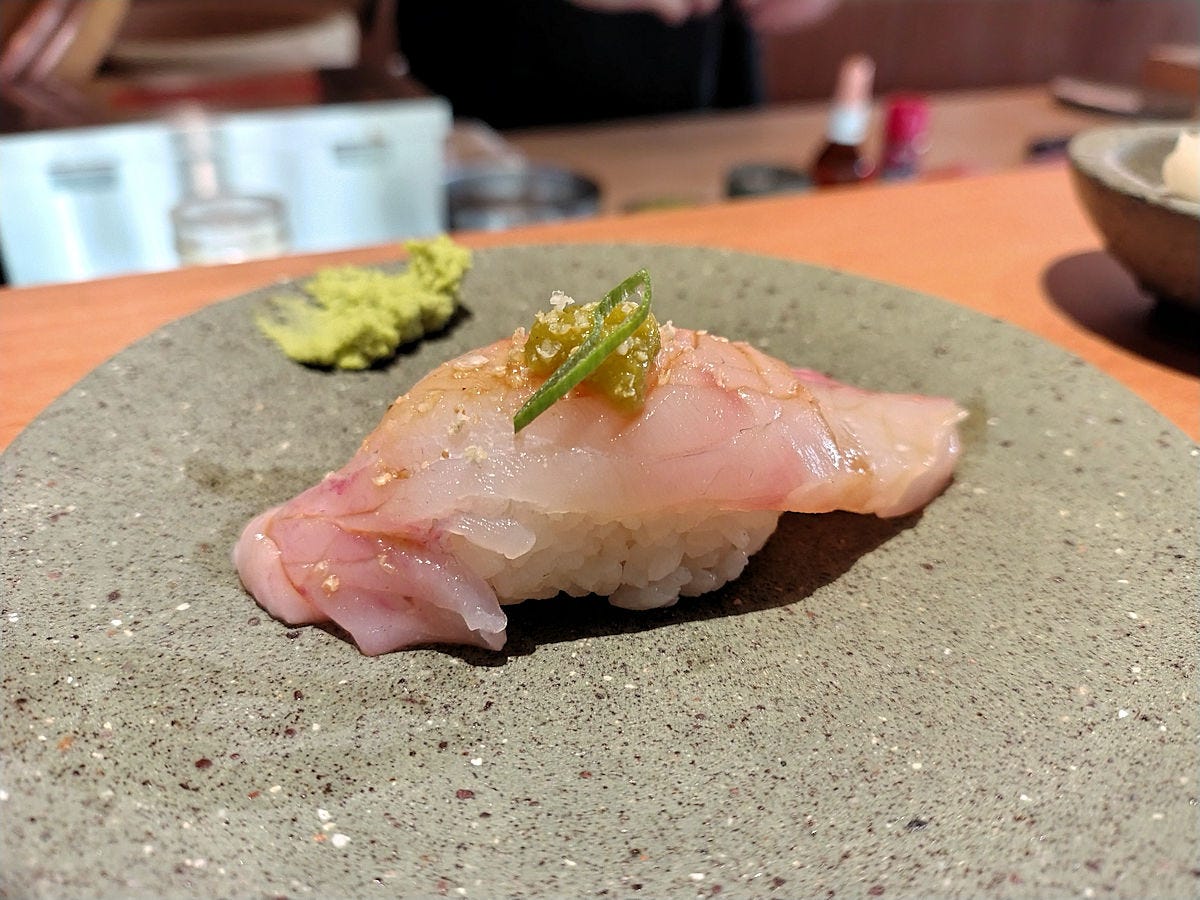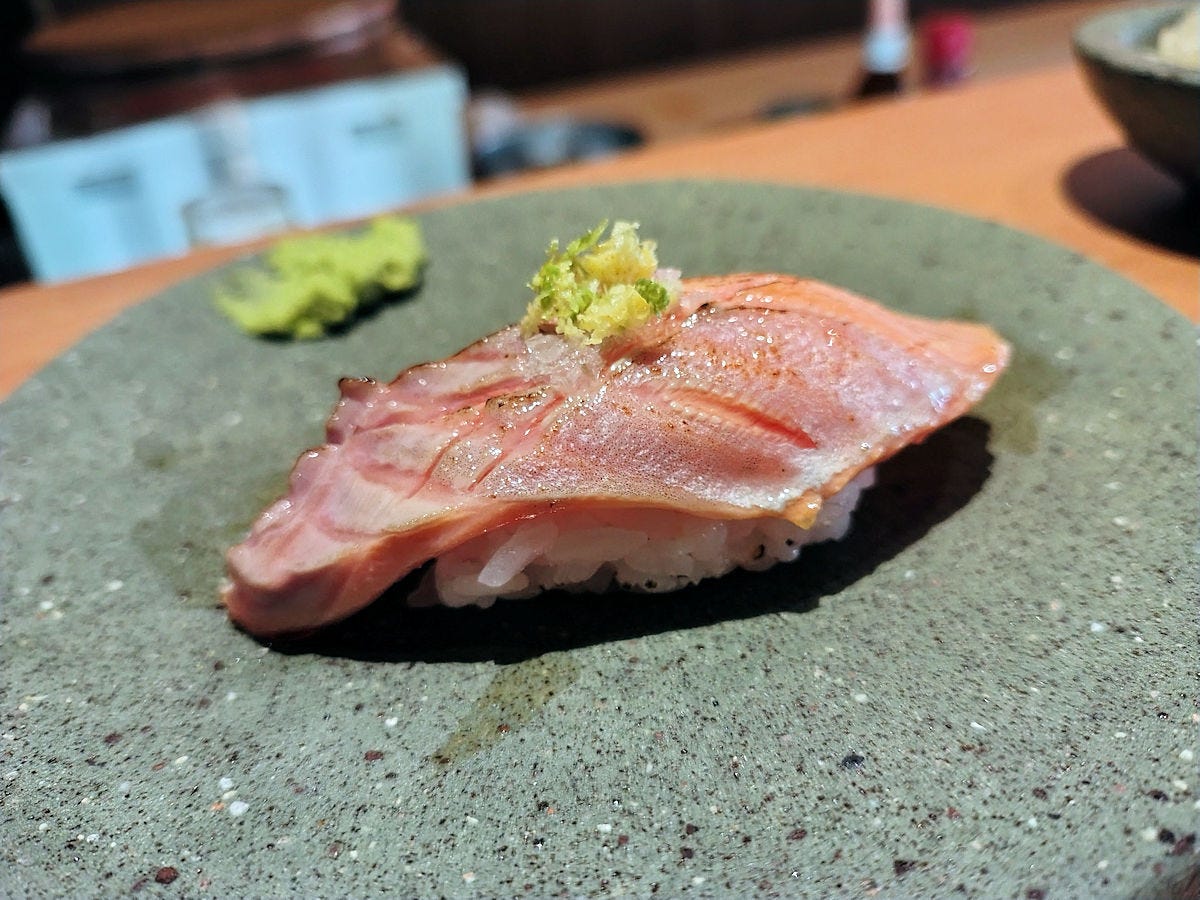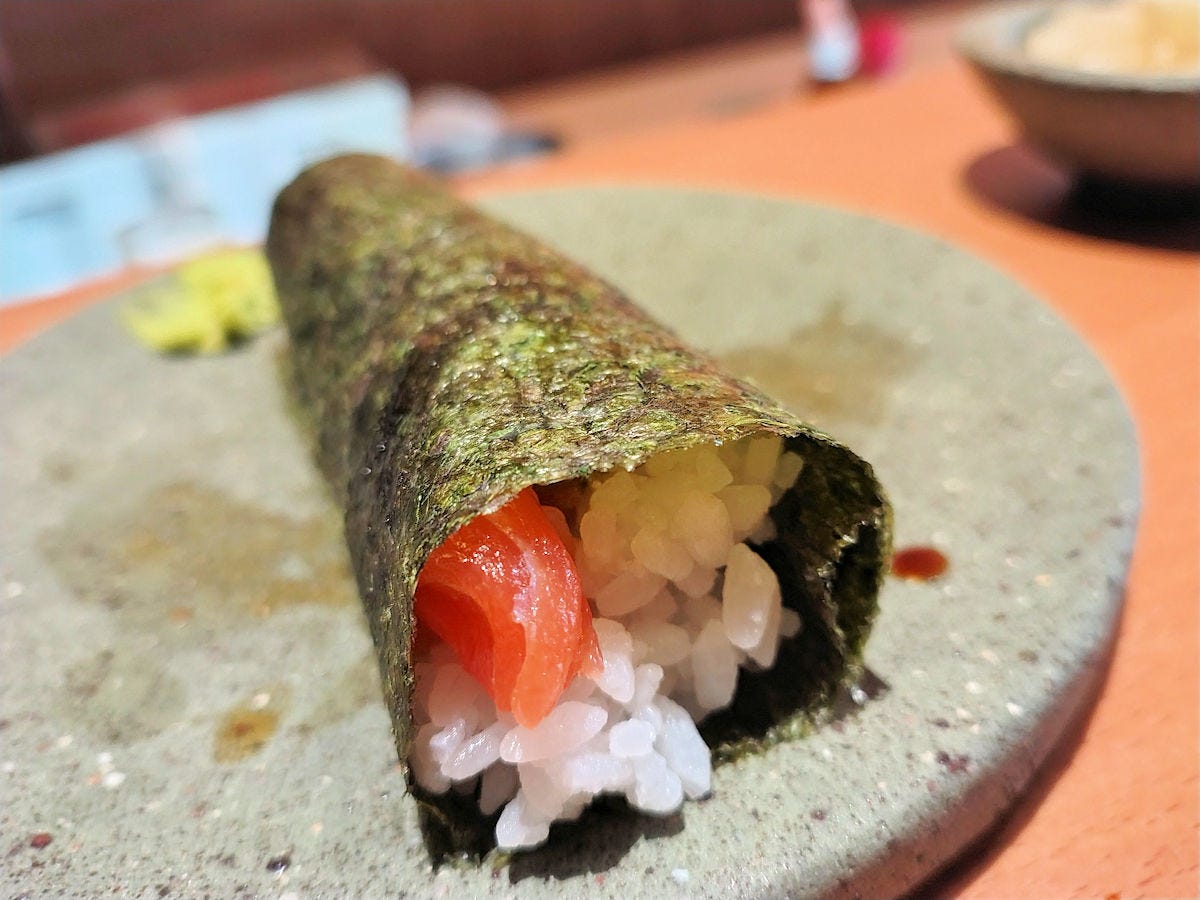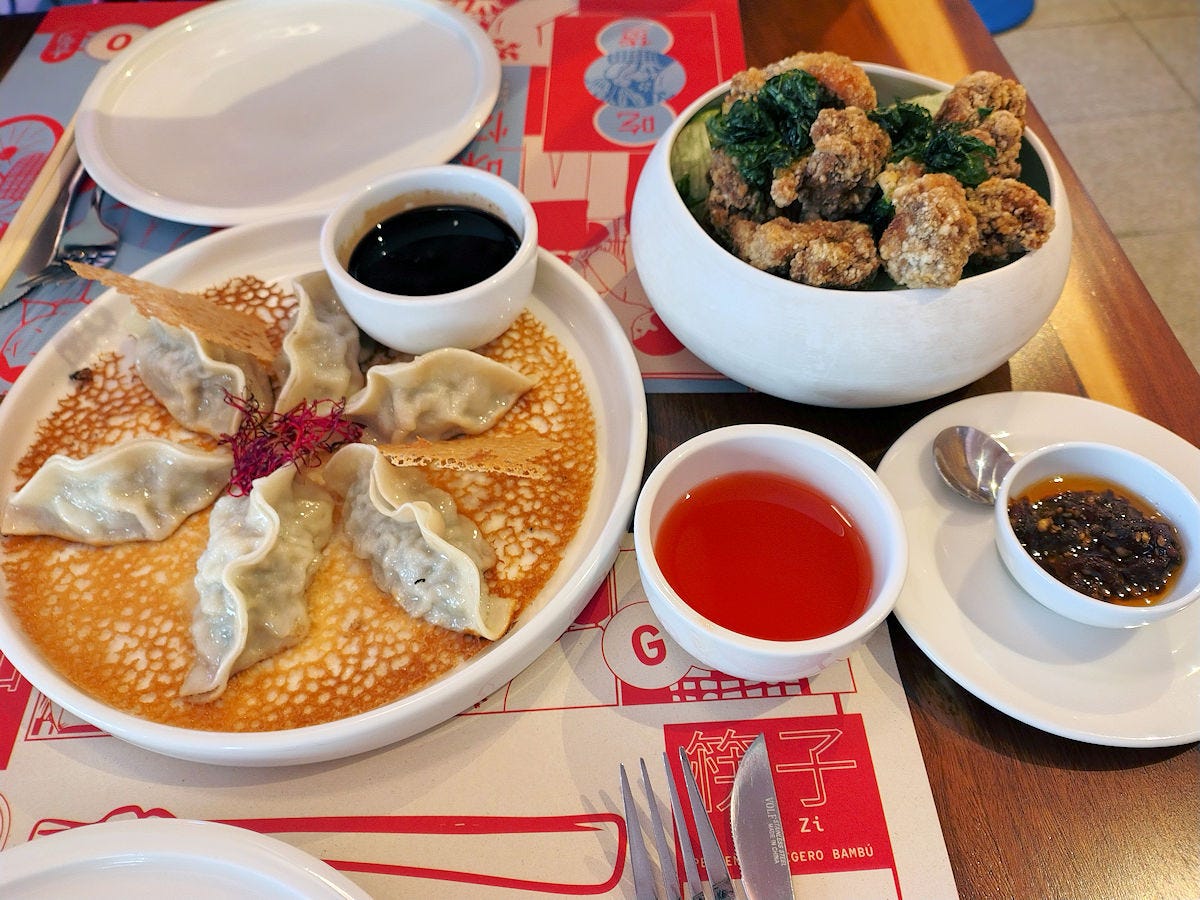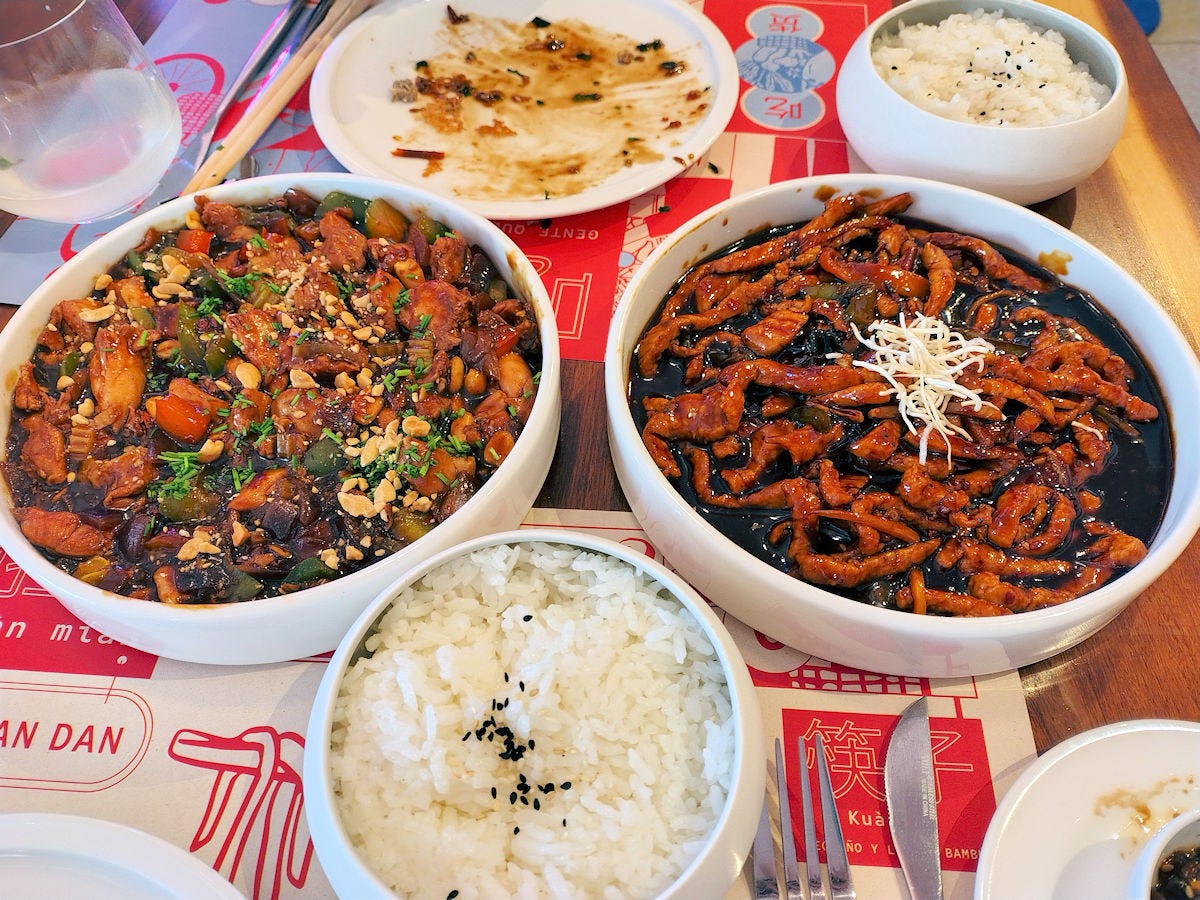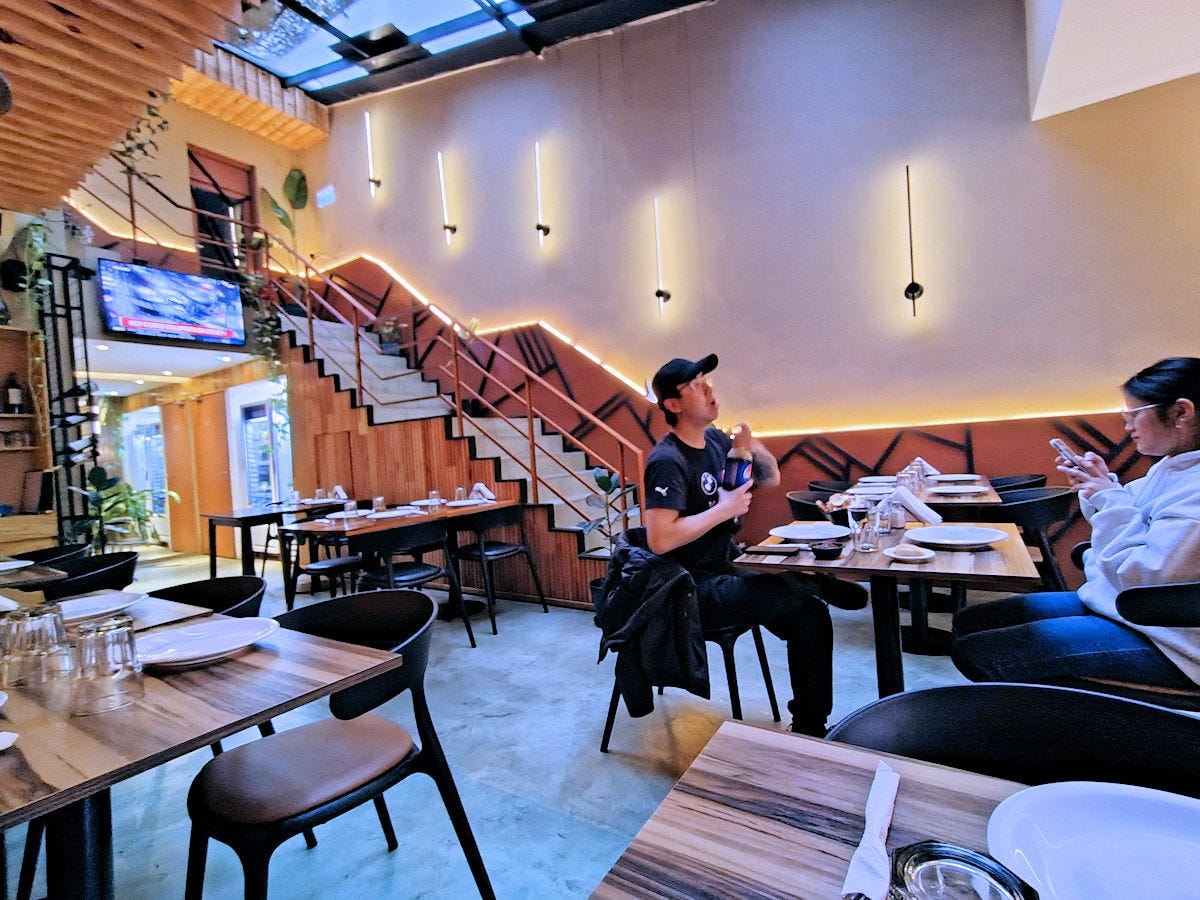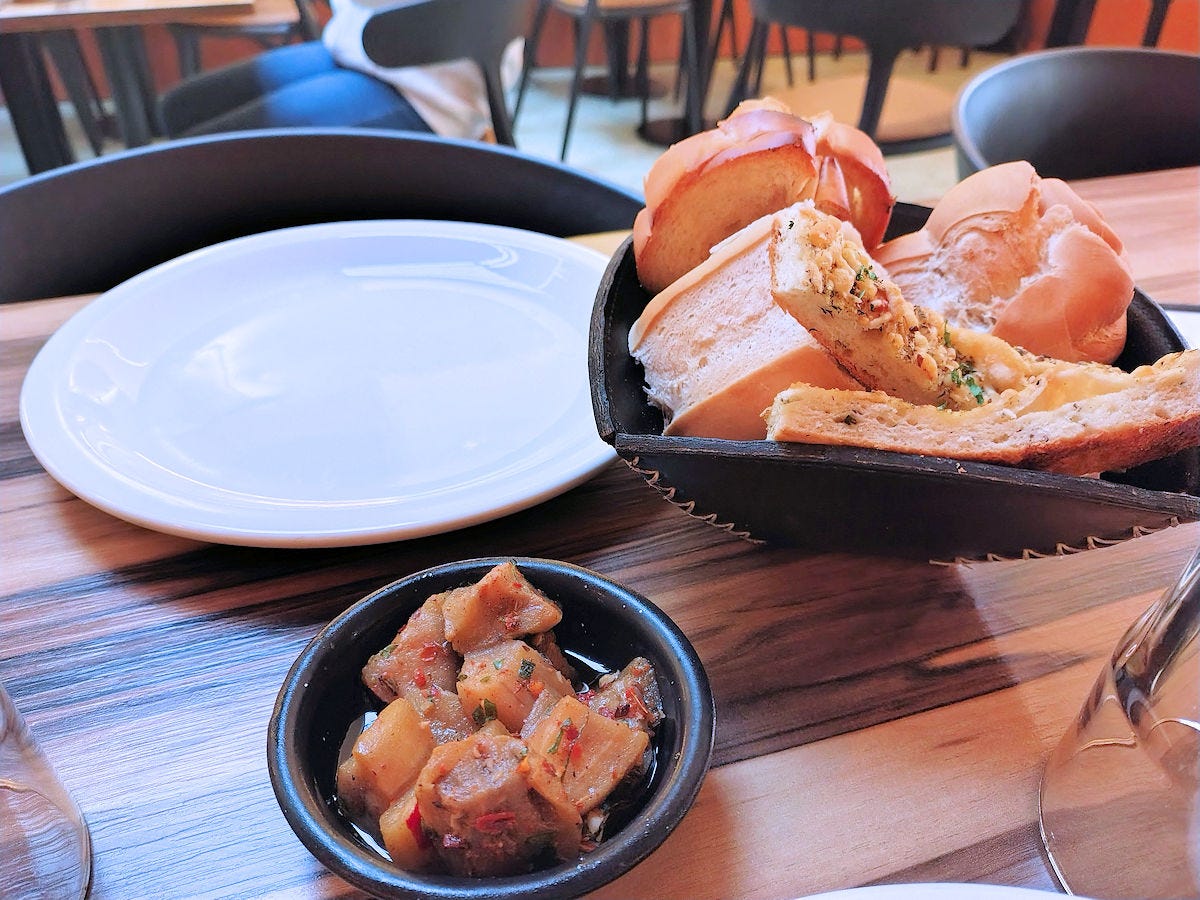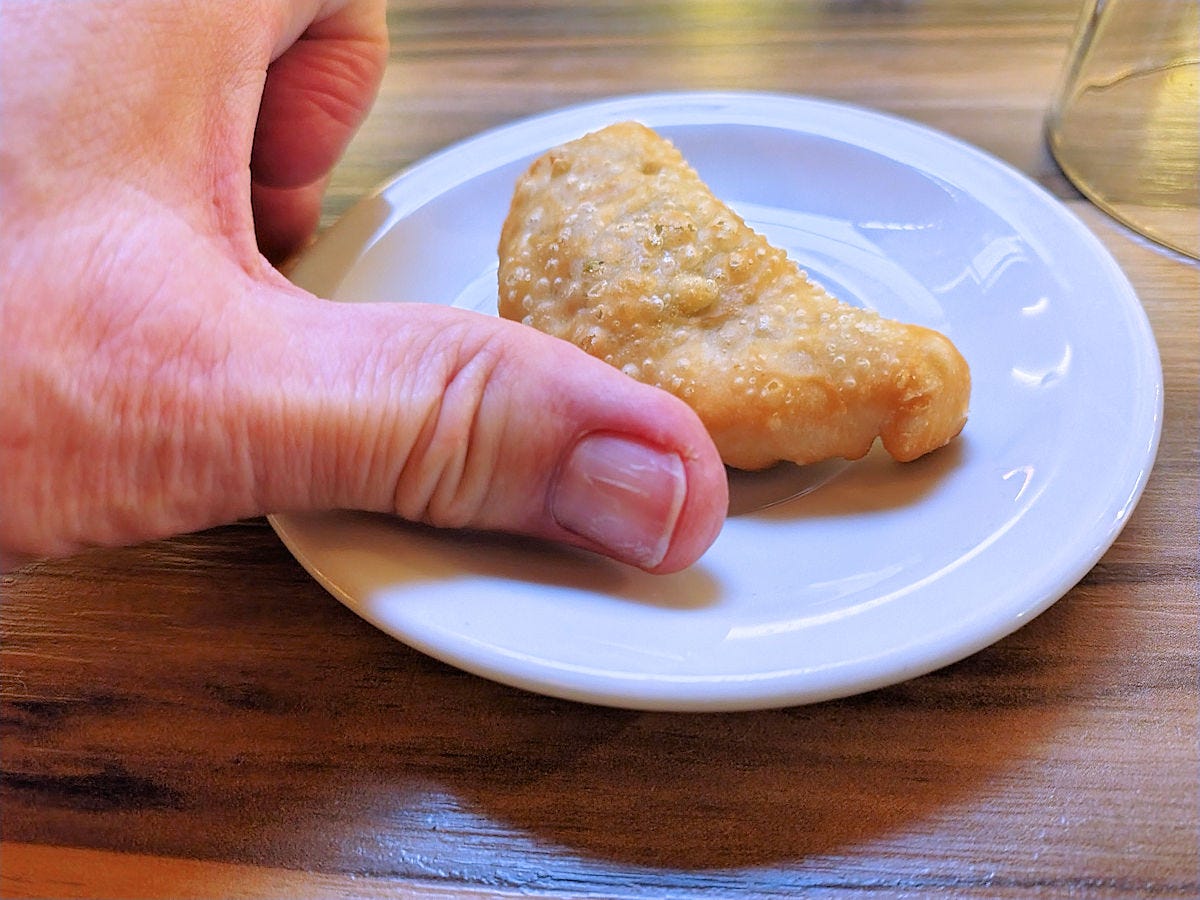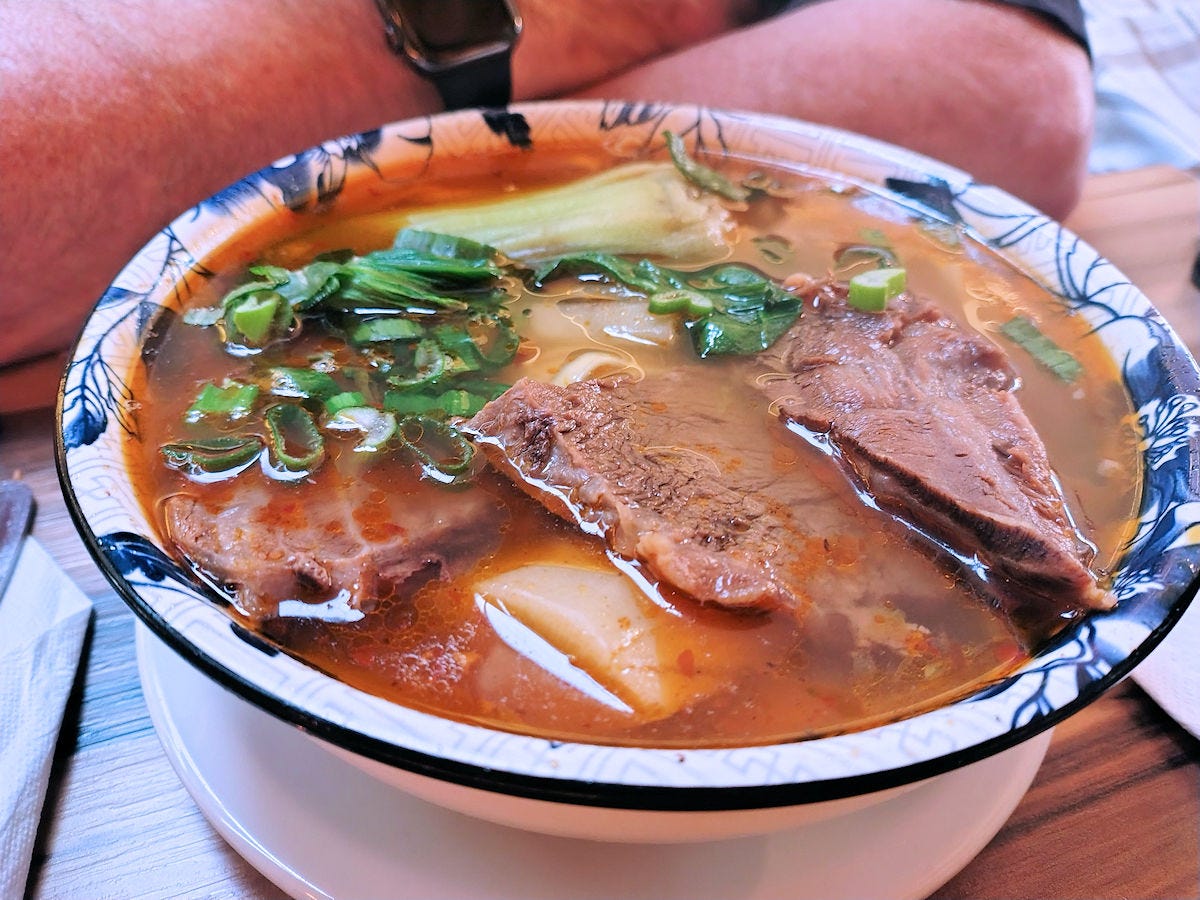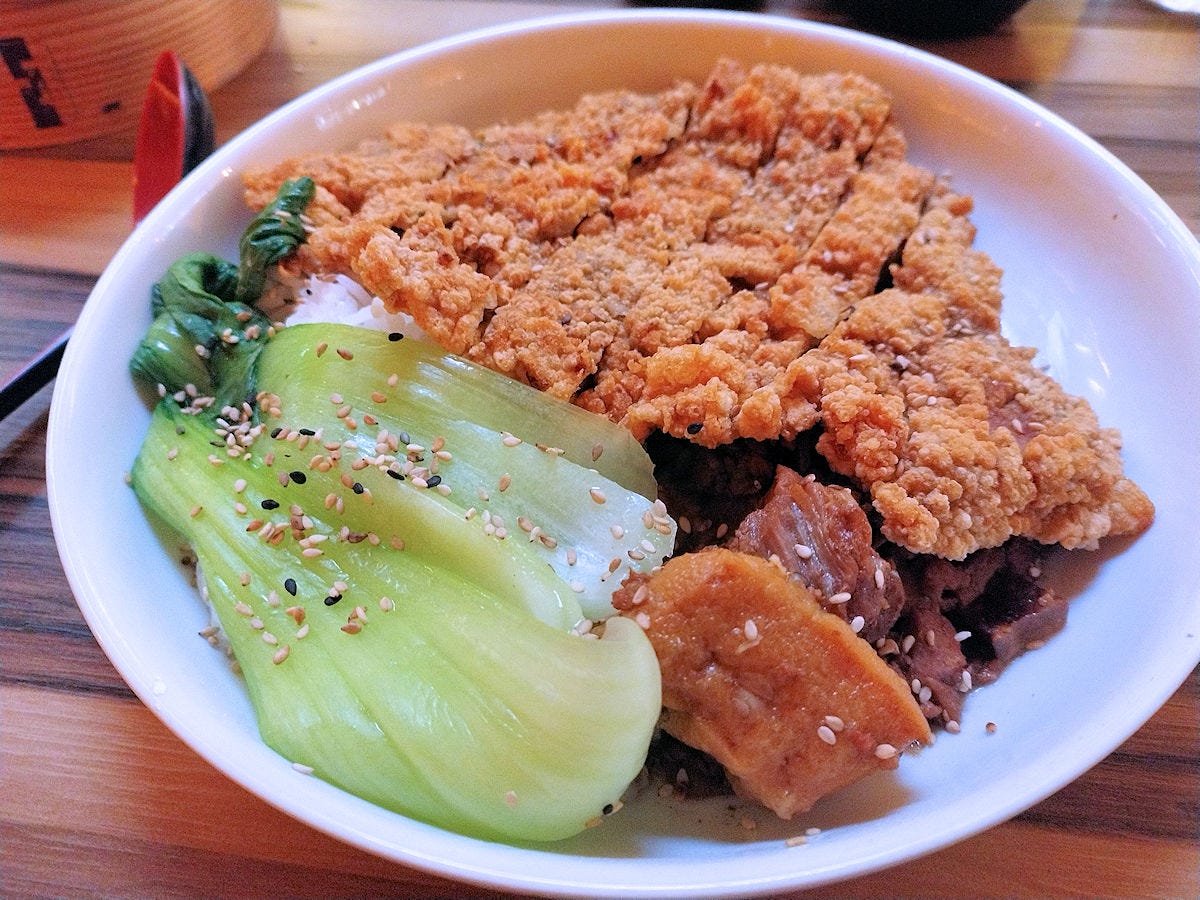Chop Suey #34
Another round of Asian restaurants. A little bit from here, a little bit from there.
This time around it’s three sushi spots, two of them, so far, just via delivery, and two new (opened this year) Chinese spots in or near Barrio Chino.
Isla Sakura, Maipú 495, Microcentro - A delivery order from a sushi place I’ve passed a few times when downtown but hadn’t yet stopped in. Dumplings with lovely browning on one side, delicate and perfectly steamed on the rest. The sushi, fresh, well formed, though I found the rice a little bland. Decent enough to be worth a direct visit down the line and see what all they offer. A little pricey - the dumplings at 16000 pesos ($12) and the various pieces of sushi adding up to a whopping 43600 ($32) for 8 nigiri and a single half-roll.
A small chain of Nikkei style sushi spots. They just opened up one near to home. In the rain, I decided to order for delivery rather than subject my warm and dry toes to the chill and wet. Surprisingly, Mikhuna Nikkei didn’t send it from the one nearby (Vicente López 2257), but rather from a branch downtown, at Montevideo 447. Maybe the new one isn’t yet setup for delivery orders.
Their combination boxes are oddly numbered, with 17, 37, and 43 piece boxes. I went with their 17 piece omakase, which indicated, as most omakase do, that it would be 17 individual pieces selected by the sushiman. I have to admit, I didn’t think it would be all rolls, figuring on some nigiri and maybe sashimi, and I also didn’t figure on it being three half-rolls, plus two thrown in pieces to try a fourth roll (probably behind the odd numbers too - the 37 either being seven different half-rolls and two extras, an the 43 being eight different, plus three extras - or maybe they do some full rolls in there). Either way, that’s not an omakase and I’d be willing to bet, it’s always the same combo. They also use a huge amount of cream cheese in their rolls. I can’t say that wowed me, though the quality is decent, and there are enough other things on the online menu that maybe I’ll just go try the one here in the ‘hood and see. 17-piece combo was 23400 pesos, a little over $17.
Ōtoro, José Hernández 2730, Belgrano - I was picking up some of the blue cheeses from my recent post and noticed that a sushi bar that’s been on my list for awhile was only a block or so away. Perfect lunch stop. Long counter, moderate lighting, hushed atmosphere. Friendly service. Most of the menu is a series of combinations, generally 6-8 pieces, though you can also order from a short a la carte menu. I went with the sushiman’s recommended “Mix” - of four nigiri and three handrolls.
I’m not going to show all the photos, just some selected ones. Uniformly very good. Creative without going crazy. Fresh fish. And quite reasonably priced - 26500 for an eight piece combo, or about $19.50. Definitely recommended!
GÄO, Cazadores 1911, Belgrano - This place has been showing up in social media feeds for a couple of months now. It’s a bit off the beaten track from Barrio Chino - closer to the Bajo Belgrano complex of restaurants, but on a residential corner. The vibe is a bit cafeteria-ish. Service is friendly, but one of those places where if you ask for a recommendation they start recommending everything on the menu, line by line.
We liked the traditional dumpling presentation with the lacy pancake - not many places here do that. The wrappers are delicate and beautifully steamed. The filling is a bit finer ground than is typical, almost like it’s been blitzed in a food processor, rather than being chopped, and is subtly flavored with ginger. The fried chicken appetizer could be far crunchier, these bordered on soggy, but, they had great flavor, and the duck sauce wasn’t overly sweet, and making a mix for both appetizers of it, the soy sauce, and the hot oil (on request) resulted in very happy campers. 11800 and 12800 pesos, respectively, or $8.75 and $9.50.
Unfortunately, this happy as clams moment faded quickly with the main courses. The kung pao chicken had no spice whatsoever, just a sort of oily, soy based sauce. There was one, count it, one, dried chili on the whole plate. The chicken was barely cooked. Overall, pretty insipid. Slightly better, the yuxiang rou si, thin strips of pork in a garlic and chili sauce. It was still pretty lacking in intensity, and not spicy, but it at least had some flavor. One plus over most Chinese restaurants here, the rice is included in the price of each main dish, rather than having to order it separately, often at ridiculously high prices for white rice. Both main courses priced at 20800 pesos, or $15.50.
I can’t say we were particularly impressed, and I really don’t see going back. It isn’t that it was bad, and we enjoyed the dumplings in particular, but there are more easily accessible, and better quality spots, so close by in Barrio Chino. I suppose if you were in Bajo Belgrano and wanted Chinese….
A few months back, a new Chinese spot opened up on the far end of Barrio Chino, at Arribeños 2382. Or at least we thought it was a Chinese restaurant. The name is Hakka, which refers to the culture of northern Chinese people who emigrated to the south, particularly Canton and Hong Kong, as well as to Taiwan, back in the 12th century. So we were looking forward to an array of dishes from those areas.
This was not to be, however, as we were presented with a menu of Argentine parrilla, steakhouse, items - all the usual suspects from appetizers to steaks to milanesas, to pasta, to desserts. And then, a small card with half a dozen Taiwanese-ish items was tossed on the table as well. Basically just fried rice or stir-fried noodles with choice of protein, a single version of ramen, and pai gu fan, the Taiwanese pork chops, typically smothered in garlic sauce and served with rice and pickled vegetables. The question was, which way to go. Obviously their focus is on the Argentine dishes, and the few other people who came in while we were there all ordered from that menu.
We… didn’t. We ordered from the secondary menu, with hopes. First we got a basket of mediocre bread, though served with a delicious and even slightly spicy eggplant escabeche. And a couple of flavorful, if… tiny… empanadas - that’s the saucer for an espresso cup, and, my thumb, for size comparison. 3000 peso cubierto for this (about $2.25).
Our hopes were soon dashed. Dumplings with thick wrappers, barely steamed, and an insipid filling. I can’t swear to it, but it wouldn’t surprise me if they just bought these, frozen, in a neighboring supermarket. No hot sauce available. None. They simply don’t do that it turns out. They have salt. And a tiny ramekin of soy sauce. That’s it. We probably could have gotten chimichurri to go with the food if we’d wanted it. A ridiculous 9000 pesos, just shy of $7. Had they been delicious and delicate, that’d be a great price.
The thick cap of oil on the ramen was not promising, which is a good thing, because one wouldn’t want to not deliver on a promise. Greasy, bland broth, a couple of big chunks of gristly, fatty meat, some equally big chunks of some vegetables, and some overcooked pasta - not ramen noodles - tagliatelle or tallarines. 20000 pesos, almost $15.
The pork didn’t fare any better. The scallop of pork inside this breading was mostly fat and gristle again, and the breading just fell apart and fell off, which was actually a good thing, because it was near inedible - chewy, oily, and flavorless. I don’t know what kind of vegetable that is peaking out from under there - it seemed almost meat-like, and it certainly wasn’t pickled, just marinated in what was probably soy and something sweet. A single piece of fried tofu. A couple of strips of steamed bok choy. And dried out, easily day-old rice. We didn’t finish either main course, asked for the check and left. 18000 pesos, a bit over $13.
Would we have fared better had we gone with the parrilla choices? I have the feeling, yes. The Taiwanese fare is clearly an afterthought, and probably only because of the name. Why bother naming it after an amazing food culture if you’re not going to offer that food? Maybe they’re stretching the definition of the Chinese diaspora to include Argentina, and happening nine centuries later. The couple of dishes that we saw from that menu - one a thick, juicy looking milanesa over a mound of fries, the other a bowl of gnocchi - both looked delicious and were avidly eaten by the couple who ordered them.
As a Chinese place, this is bottom of the barrel - quite possibly the worst Chinese food I’ve had in Buenos Aires, and there have been some bad spots over the years. The question for me is whether it’s worth going there to sample those offerings, especially with El Pobre Luis directly across the street, a long time star in the local steakhouse world. In fact, I think it’s time for an overdue visit there and a new review. I haven’t been since shortly before the pandemic.


